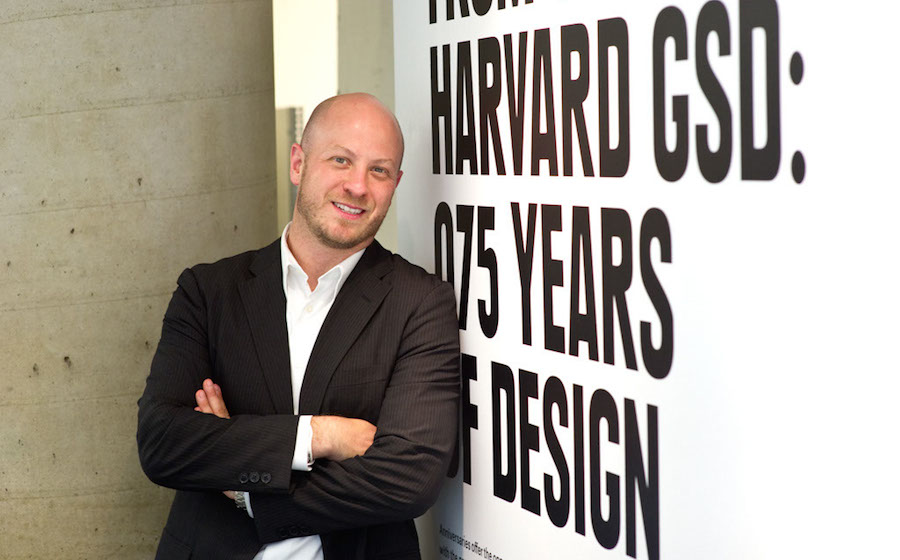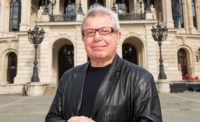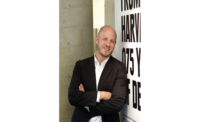In November, the American Institute of Architects New York (AIANY) and Center for Architecture selected Benjamin Prosky as its new executive director. Prosky, who is the assistant dean for communications at Harvard’s Graduate School of Design (GSD), will officially take the reins of the chapter—the AIA’s largest and oldest—next month.
Prosky holds a B.A. in Urban Studies from Vassar College and studied Urban Planning at Columbia University’s Graduate School of Architecture, Planning and Preservation (GSAPP), where he concurrently served as the director of special events and external affairs until taking the job with the GSD in 2011. Some of Prosky’s achievements there include revitalizing Harvard Design Magazine, relaunching the school’s Wheelwright Prize, coordinating student involvement in the 2014 Venice Architecture Biennale, and mounting a myriad of exhibitions.
He is gearing up for a busy tenure at AIANY, laying the groundwork for a robust schedule of events and preparing to host the 2018 National Convention. RECORD spoke with Prosky by phone in Cambridge, where he was just back from Design Miami, helping to direct the GSD’s pavilion.
Architectural Record: What do you hope to accomplish during your tenure as AIANY’s executive director?
Benjamin Prosky: I think the Center for Architecture is an absolutely crucial space in New York. And it needs to be a crucial space not only for architects, but also for local residents and those interested in architecture and beyond. In general, I hope this becomes a place that young people stepping into the profession see as not only relevant, but helpful.
For the last several years you have worked in an academic context. What are some takeaways?
I’ve learned a lot working in an experimental, academic environment. Architecture needs to be understood as a problem-solving profession. Students at Harvard and elsewhere are concerned about issues of equity. What are designers’ roles in creating more equitable cities, especially when it comes to issues of race that have plagued our cities recently? Women in design is another issue; we are not seeing as many women leaders at firms as men. That’s a push for change we’ve seen at Harvard, with [the student-led petition supporting a retroactive Pritzker Prize for] Denise Scott Brown, who just received the AIA Gold Medal. Something else I have learned is how important it is to be experimental and to keep up with changing technology. Harvard just launched a master’s in design engineering [a joint initiative between the GSD and the engineering school], for example.
At the center, do you hope to encourage more cross-disciplinary discussions?
Absolutely. I would love to not just see architects talking to architects, but see architects speaking with people in other professions. If we are making cities, we want to be talking to lighting designers, landscape architects, and planners. I want this to be a place where design professionals can learn or talk about collaborating, and I think the center can really foster those kinds of interactions.
You mentioned students, but what are the concerns of AIANY members?
There are many wonderfully engaged members at AIANY. They are concerned about the future of the profession, which translates to young people seeing value in the career. But members are also concerned about how architecture relates to government policies. We need to keep in close contact with the city, state, and national levels to understand what changes affect the profession, how we design, and what we design for.
How do you plan to build upon the legacy of your predecessor, Rick Bell?
I am so grateful to Rick for leaving the center in a solid place. Building on his legacy is continuing to use that space to the best of its ability and build upon its programs. Rick was very visible and accessible, and I hope to continue to be a leader that members can come to.
What can RECORD readers look forward to seeing from AIANY and the center in 2016?
I think we are going to look at programs that engage young architects, and look at stepping outside our door. I can’t declare anything in terms of exhibitions and programs yet, but I think you are going to see some real focus and curatorial intent. And I think you’re going to see a quick response when issues come up; to be a gathering place for our community, the center has to be able to move and respond.




Post a comment to this article
Report Abusive Comment